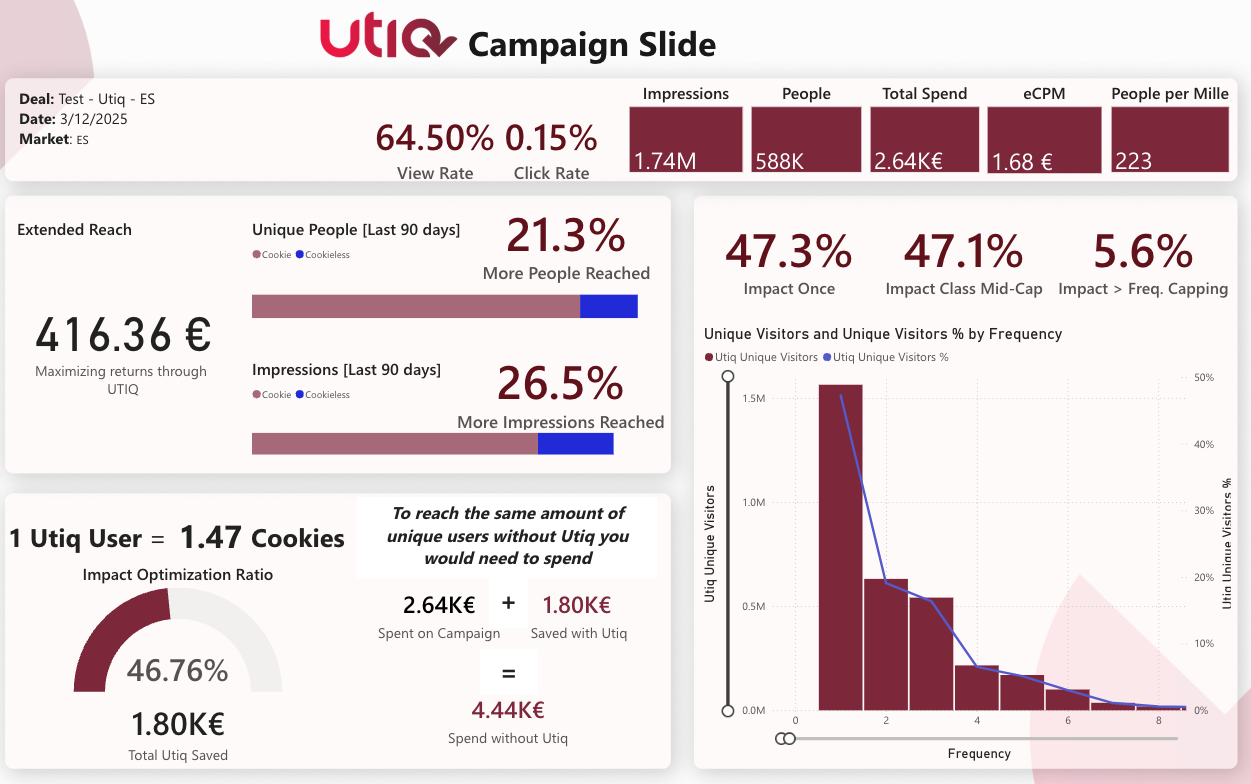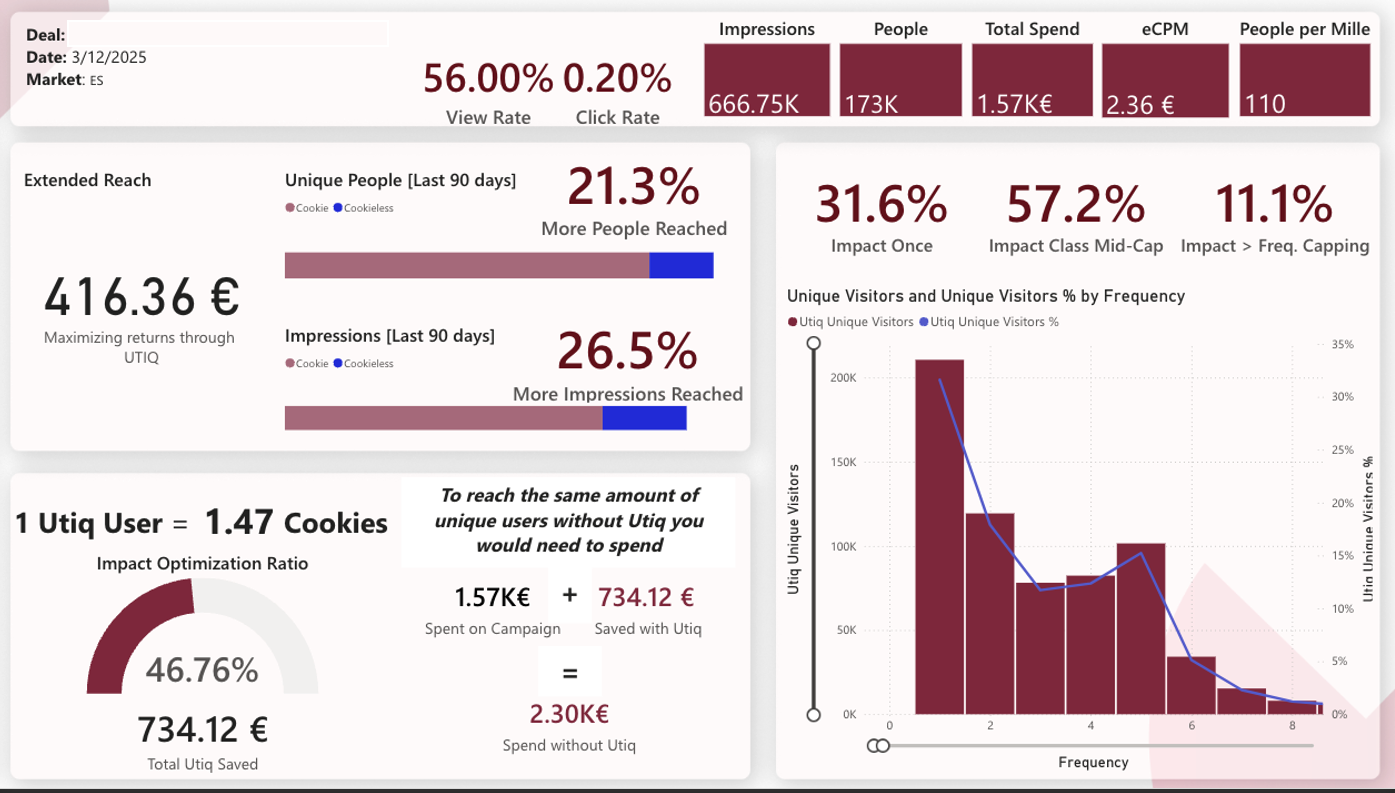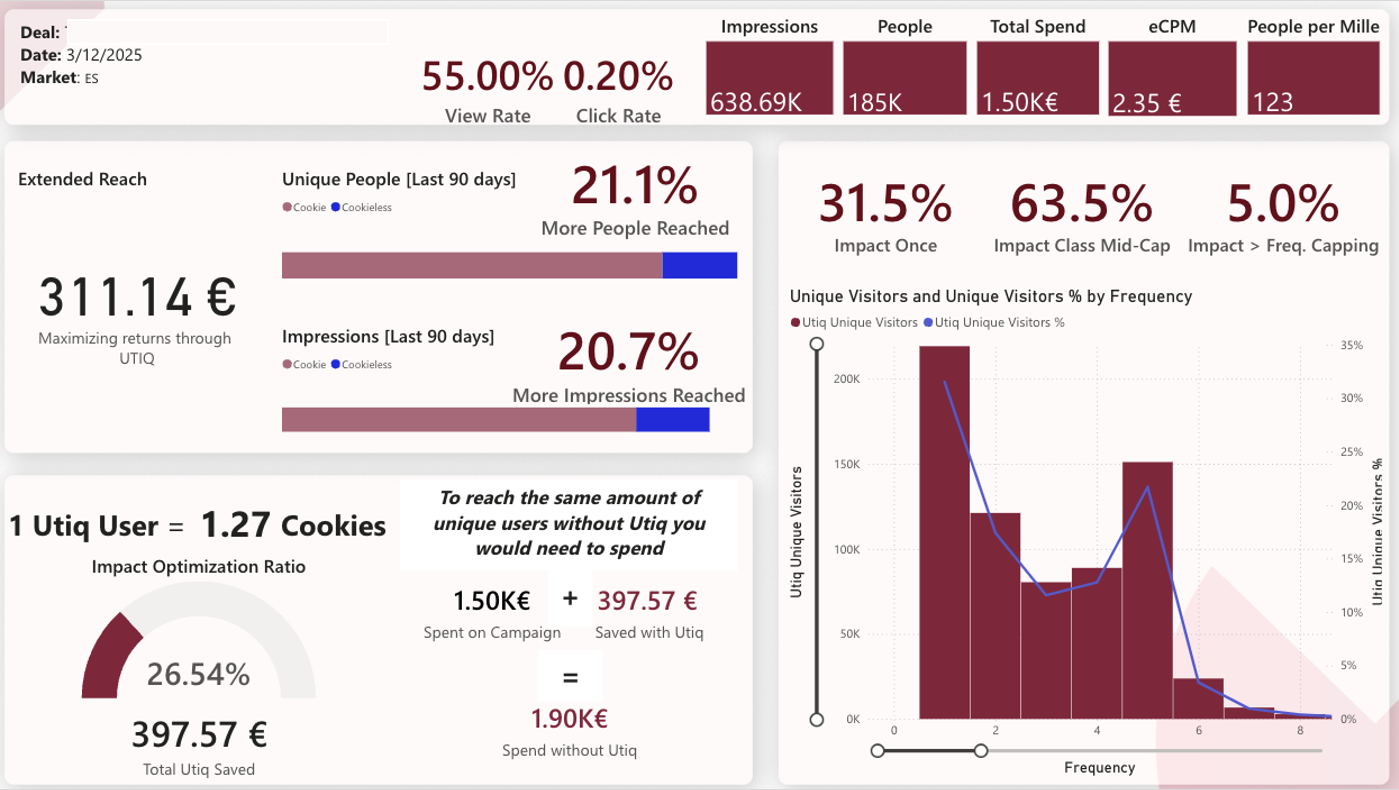Measuring Savings with UTIQ: Cookie Overlap and Frequency Capping Optimization
In every campaign, UTIQ is able to calculate savings by reducing waste caused by cookie overlap. Since a single UTIQ token corresponds to multiple cookies, working with UTIQ leads to direct cost savings by eliminating redundant impressions.
These savings are clearly visible in the UTIQ Dashboard and Reporting, providing advertisers with transparency into the efficiencies gained.

To reach the same number of unique individuals, a significantly higher budget would have been required due to cookie duplication, as shown in the screenshot. Utiq eliminates this inefficiency, allowing you to reach the same audience while spending less.
However, there is an additional layer of savings that traditional campaigns are unable to measure—those resulting from frequency capping optimization. In most DSPs, frequency capping relies on cookies, which leads to impressions being served even after the frequency limit has been reached. Some advertisers have reported that up to 40% of impressions in leading DSP platforms exceed their intended frequency cap, leading to unnecessary spend with no added value.
UTIQ eliminates this issue by leveraging deterministic user identification, ensuring that frequency capping is accurately applied at the user level rather than at the cookie level.
To quantify these savings, an A/B test configuration is required. This test involves setting up two identical deals:
One deal where UTIQ manages frequency capping deterministically at the user level.
A second deal where frequency capping is managed by the DSP, following traditional cookie-based limitations.
To ensure accuracy, the target audience is split evenly across the population, with each half assigned to one of the two deals. By comparing the performance of both DSP executions, advertisers can measure the precise cost savings generated by UTIQ’s superior frequency management.
This test is highly recommended at the start of any partnership with a new advertiser to establish the potential savings margin from UTIQ’s frequency capping capabilities. Once the effectiveness is proven, advertisers are encouraged to consolidate into a single deal managed entirely by UTIQ, maximizing efficiency while maintaining optimal frequency control—although at this stage, direct savings from frequency capping would no longer be measurable.
Let’s see an example where:
In the first deal, Utiq only measures waste based on cookie deduplication and frequency capping applied by DV360.

In the second deal, Utiq are able to reduce waste based on cookie deduplication and frequency capping done based on Utiq.

Understanding the Savings:
First Deal: Shows a potential savings of 46%. Keep in mind that Utiq only measures; it does not apply any efficiency.
Second Deal: Utiq is able to address cookie deduplication, leading to 26.54% savings. However, since frequency capping savings cannot be directly measured
Now, we need to factor in the potential savings from Deal 1, adding an additional 19.46% from frequency capping efficiency, which cannot be directly measured after implementation.
Conclusion:
To achieve the same results as Deal B (reaching 185K people in a cookie-based campaign), you would need to spend €2,300, compared to the €1,500 spent with Utiq.
